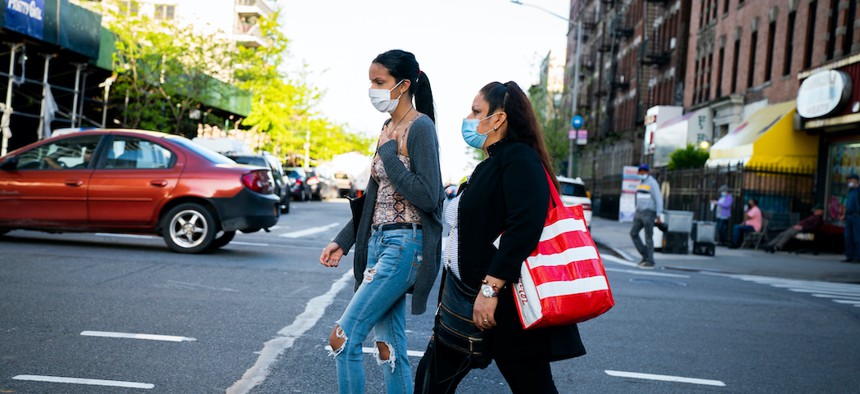The coronavirus pandemic has derailed efforts to get New York City residents counted in this year’s census. The city’s census response rate has lagged 8 percentage points behind the national average and several neighborhoods have seen fewer than half of residents respond.
But Washington Heights and Inwood, which have historically performed well in responding to the census, have outpaced the city as a whole. Certain parts of the area have reached response rates as high as 75% – far surpassing the national rate – and in most census tracts more than 60% of residents have filled out their census forms.
Much of the area’s success can be attributed to its history of effective census outreach. Relying on a network of religious institutions, schools, local nonprofits, elected officials and doctors to spread the word, the largely Dominican community in the area has consistently been able to make the decennial count a priority. The Upper Manhattan neighborhoods had higher average response rates than the city in both 2000 and 2010 censuses, earning it the honor of having one of the highest participation rates nationally during the 2010 census.
“The neighborhood has developed a strategy and culture for responding to the census,” said Rep. Adriano Espaillat, who was also actively engaged in census outreach during 2010 as a state legislator.
Success in Washington Heights and Inwood has also defied conventional wisdom that Latino communities, particularly Latino immigrants, are considered “hard to count” in the census. Strong mobilization has capitalized on the civic nature of the region’s Dominican community, according to census outreach workers in the area. And previous outreach efforts made it easier to convince residents to fill out the census in 2020, although most in-person initiatives were suspended due to the pandemic.
“That push really led people to understand what the census is,” said Juan Rosa, Northeast director at the NALEO Educational Fund, which promotes civic engagement among Latinos. “And when we went out now, it’s a lot about doing outreach and equipping people with the ‘how to’ and the ‘when’, rather than educating on the ‘why’ and what it is.”
New York City officials have tried to replicate this strategy citywide by funneling $19 million into local nonprofits targeting hard-to-count communities, which includes immigrants, renters and low-income people. They may be difficult to reach for myriad reasons, such as linguistic barriers or mistrust in government. By using community organizations, city officials hoped that residents may be more amenable to calls to fill out their census forms.
Juan Tapia-Mendoza, a pediatrician with the Somos Community Care network of physicians, said that because community providers like Somos promote social connection with patients, it can be easier to encourage them to fill out the census. A conversation about how the pandemic has affected them and their families can help doctors explain why the census will determine how much federal funding goes to their community.
But much of the city’s efforts to do outreach at block parties and other in-person locations have been stymied since March. Washington Heights and Inwood have also seen overall declines in their response rates compared with 2010 likely for similar reasons. But the region was still well-positioned to keep up a comparatively higher response rate because of their history in census outreach and strong partnerships among nonprofits.
“A lot of the community organizations have consistently worked together,” said Maria Guzman-Colon, who has led census initiatives for the Northern Manhattan Improvement Corp., a nonprofit that offers legal and social services. “So throwing the census into things, it wasn’t like reinventing the wheel.”
But Aldrin Rafael Bonilla, Manhattan deputy borough president, cautioned that the response rate in Upper Manhattan may give a misleading impression of how successful the count has been there. He said in highly populated communities like Washington Heights and Inwood, approximately 40% of people still haven’t been counted, which represents a larger swath of New York’s population than certain other neighborhoods that may have lower response rates, such as the Financial District.
“We cannot celebrate,” he said. “We cannot think this is great because that percentage number is misleading.”
Boosting participation in the census count has only been further complicated by the Trump administration. The U.S. Census Bureau’s outreach phase, in which workers knock on people’s doors to follow-up with nonrespondents, will end a month earlier than initially planned, which has inflamed fears of an undercount. And what legal experts believe to be an unconstitutional effort to exclude undocumented immigrants from the population count has reignited concerns that undocumented immigrants may be fearful of filling out their census forms.


